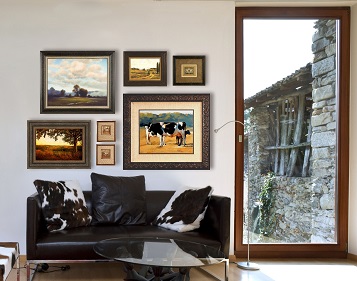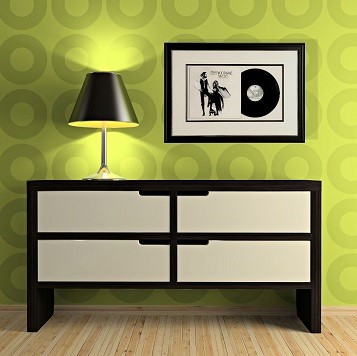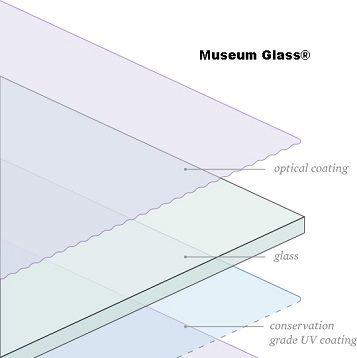 What’s the point of hanging great art in your home if you can’t actually see it? Glare, shadows, and uneven lighting all affect how a picture is viewed. Proper lighting enhances the effect of your art in the room, but there is no one-size-fits-all answer when it comes to lighting your art. Selecting one of our types of UV-protective glazing will help minimize the negative effects of light upon your artwork and our Museum Glass® dramatically reduces reflections. But there are still a few things to keep in mind.
What’s the point of hanging great art in your home if you can’t actually see it? Glare, shadows, and uneven lighting all affect how a picture is viewed. Proper lighting enhances the effect of your art in the room, but there is no one-size-fits-all answer when it comes to lighting your art. Selecting one of our types of UV-protective glazing will help minimize the negative effects of light upon your artwork and our Museum Glass® dramatically reduces reflections. But there are still a few things to keep in mind.
A void Direct Light: When placing art, it’s best on a wall that doesn’t get direct natural light. Indirect light is okay, but avoid direct light. Over time, UV rays can age and fade your art. North-facing walls will have consistent, softer lighting for most of the day, east-facing will have morning light, south-facing will have afternoon light (the strongest and hottest) and west-facing will receive evening light.
void Direct Light: When placing art, it’s best on a wall that doesn’t get direct natural light. Indirect light is okay, but avoid direct light. Over time, UV rays can age and fade your art. North-facing walls will have consistent, softer lighting for most of the day, east-facing will have morning light, south-facing will have afternoon light (the strongest and hottest) and west-facing will receive evening light.

Ambient Light: Position the artwork beside or above a console or side table where an existing light can provide added depth and ambiance to the framed art. Move a floor lamp or table lamp so that it sheds light not only on the framed art, but also on the space around it.
 Ceiling-Mounted Accent Lights: Pin spotlights that direct light onto individual artworks are a great way of highlighting them. The ceiling fixtures can be recessed or surface-mounted, and allow the direction of light to be adjusted. They can also be specified with a range of light-beam spreads, so you can ensure that the light covers most of the artwork.
Ceiling-Mounted Accent Lights: Pin spotlights that direct light onto individual artworks are a great way of highlighting them. The ceiling fixtures can be recessed or surface-mounted, and allow the direction of light to be adjusted. They can also be specified with a range of light-beam spreads, so you can ensure that the light covers most of the artwork.
Track Lights: Track-lighting systems have come a long way, and many now have a much cleaner, more minimalist look than the tracks of decades past. Equipped with the right lamps, they perform largely the same as ceiling-mounted accent lights but provide a few more advantages; they’re easier to install and offer future flexibility.
Wall Washers: Wall washing is a technique that doesn’t require light to hit every piece of art in a room. Instead you “wash a wall” with light. Wall washing provides a wide distribution of light across an entire wall and comes in many forms. You can use recessed, surface-mounted, and track lighting that can be installed on ceilings, walls, or even floors.
Picture Lights: Typically picture lights are mounted on the wall or the frames of individual artworks. It positions the light source close to the work of art with very low-wattage lamps. It offers a sense of intimacy with a piece of art, and invites you to come over for a closer look. LED varieties are available as are remote-controlled and battery-operated versions.
What kind of bulbs should I use?
LED lights are your best choice because they do not give off heat or emit damaging ultraviolet or infrared light. They’re also long-lasting and energy efficient. Fluorescent lights should be avoided because they don’t flatter the colors in artwork and they emit a lot of UV rays that can cause artwork to fade.
Generally speaking, the light source should be at a 30 degree angle to the art to minimize glare. Be careful not to position lights too closely; if you place your hand in front of the artwork and can feel heat from the light source, your art is at risk of being damaged
